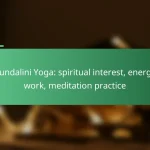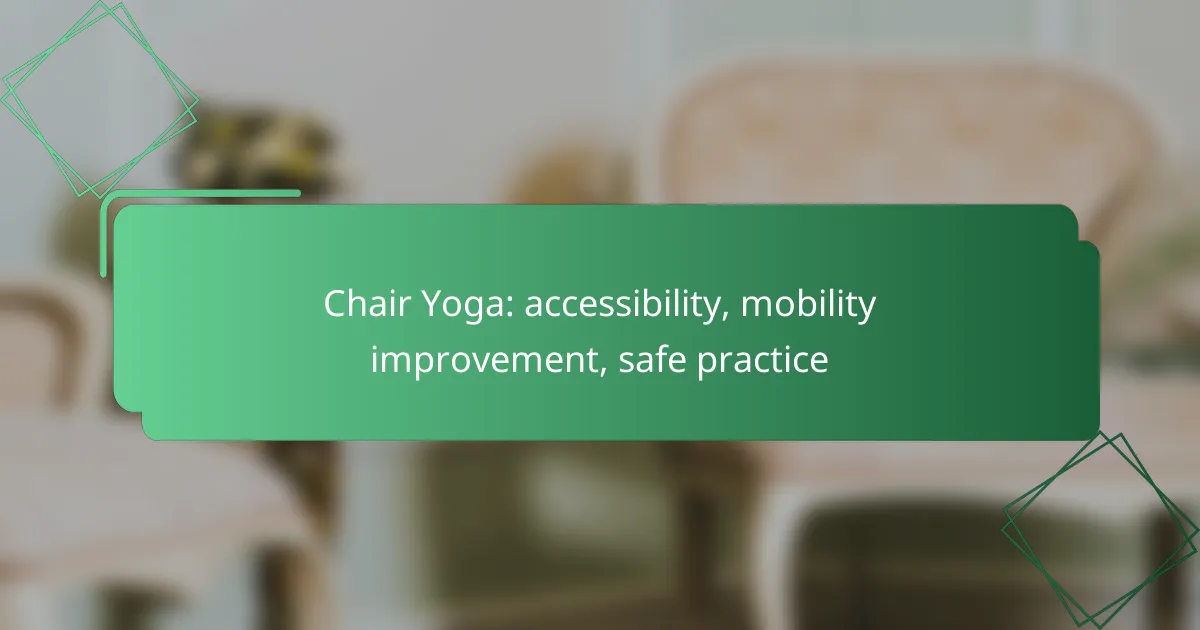Sivananda Yoga offers a holistic approach to well-being by integrating physical postures, breathing techniques, and meditation practices. This comprehensive system promotes relaxation, reduces stress, and enhances mental clarity, fostering a deep sense of calm. By emphasizing ethical living and balance, Sivananda Yoga nurtures not only the body but also the mind and spirit, encouraging overall health and spiritual growth.

How does Sivananda Yoga promote relaxation?
Sivananda Yoga promotes relaxation through a combination of breathing techniques, meditation practices, and asana sequences. These elements work together to reduce stress, enhance mental clarity, and foster a deep sense of calm.
Breathing techniques
Breathing techniques in Sivananda Yoga, particularly pranayama, are essential for inducing relaxation. Techniques such as deep abdominal breathing and alternate nostril breathing help regulate the nervous system and lower stress levels.
To practice deep abdominal breathing, sit comfortably and inhale deeply through the nose, allowing the abdomen to expand. Exhale slowly through the mouth, feeling the tension release. Aim for a duration of 5-10 minutes daily to experience significant benefits.
Meditation practices
Meditation practices in Sivananda Yoga focus on mindfulness and concentration, which are vital for relaxation. Techniques like mantra meditation and visualization can help quiet the mind and promote a tranquil state.
For mantra meditation, choose a simple word or phrase, such as “Om,” and repeat it silently while focusing on your breath. Start with sessions of 10-15 minutes and gradually increase the duration as you become more comfortable.
Asana sequences
Asana sequences in Sivananda Yoga are designed to release physical tension and promote relaxation. Poses such as Child’s Pose, Forward Bend, and Corpse Pose are particularly effective for calming the mind and body.
Incorporate a gentle flow of these poses into your routine, holding each pose for several breaths. Aim for a session of 30-60 minutes, focusing on slow transitions and deep breathing to enhance the relaxation experience.
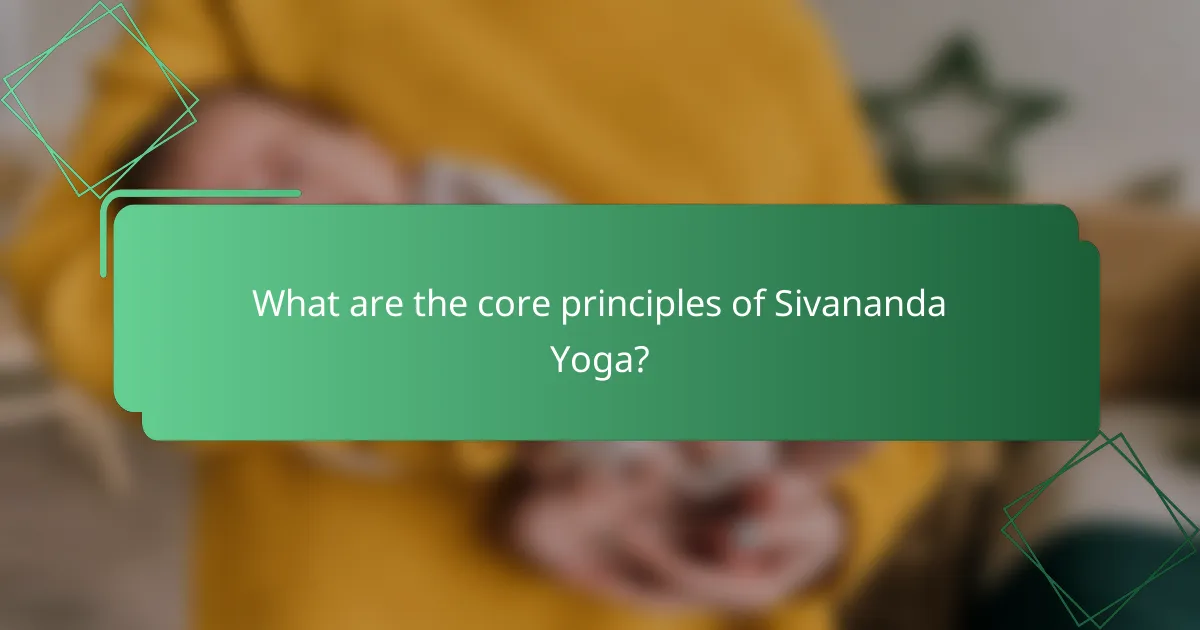
What are the core principles of Sivananda Yoga?
The core principles of Sivananda Yoga focus on a holistic approach to well-being, integrating physical postures, breath control, meditation, and ethical living. This system emphasizes balance in life through the practice of yoga, promoting physical health, mental clarity, and spiritual growth.
Five points of yoga
The Five Points of Yoga in Sivananda Yoga are: Proper Exercise, Proper Breathing, Proper Relaxation, Proper Diet, and Positive Thinking. Each point contributes to a balanced lifestyle and enhances overall well-being.
- Proper Exercise: Engage in asanas (postures) that strengthen and stretch the body.
- Proper Breathing: Practice pranayama (breath control) to increase energy and calm the mind.
- Proper Relaxation: Incorporate relaxation techniques to reduce stress and rejuvenate the body.
- Proper Diet: Follow a vegetarian diet rich in whole foods to nourish the body.
- Positive Thinking: Cultivate a positive mindset through affirmations and meditation.
Integration of mind and body
Sivananda Yoga emphasizes the integration of mind and body through its practices, creating a harmonious connection that fosters overall health. This integration is achieved by focusing on breath, movement, and mindfulness during yoga sessions.
Practitioners are encouraged to be present in their bodies while also cultivating awareness of their thoughts and emotions. Techniques such as meditation and mindful breathing help bridge the gap between mental and physical states, leading to improved emotional resilience and clarity.
To effectively integrate mind and body, set aside time for daily practice, even if it’s just 15-30 minutes. Consistency is key, as it allows for gradual improvement in both physical strength and mental focus.

How can Sivananda Yoga enhance holistic health?
Sivananda Yoga enhances holistic health by integrating physical postures, breathing techniques, and meditation to promote overall well-being. This practice fosters a balanced lifestyle, addressing not just the body, but also the mind and spirit.
Physical benefits
The physical benefits of Sivananda Yoga include improved flexibility, strength, and stamina. Regular practice can help alleviate tension and pain, particularly in the back and joints, by promoting better posture and alignment.
Additionally, the incorporation of pranayama (breathing exercises) enhances lung capacity and respiratory function, which can lead to increased energy levels. Practitioners often report better sleep quality and a stronger immune system as a result of consistent practice.
Mental clarity
Sivananda Yoga promotes mental clarity through mindfulness and focused breathing, which help reduce stress and anxiety. The meditative aspects of the practice encourage a calm mind, allowing for improved concentration and cognitive function.
Engaging in regular sessions can lead to enhanced problem-solving skills and creativity, as the practice encourages a state of mental relaxation that fosters innovative thinking. Many practitioners find that they can approach challenges with a clearer perspective after their yoga sessions.
Emotional balance
This yoga style supports emotional balance by encouraging self-awareness and acceptance. Through the practice, individuals learn to observe their thoughts and feelings without judgment, which can lead to greater emotional resilience.
Furthermore, Sivananda Yoga fosters a sense of community and connection, which can alleviate feelings of isolation. Regular practice can help individuals manage their emotions more effectively, reducing instances of stress and promoting a more positive outlook on life.
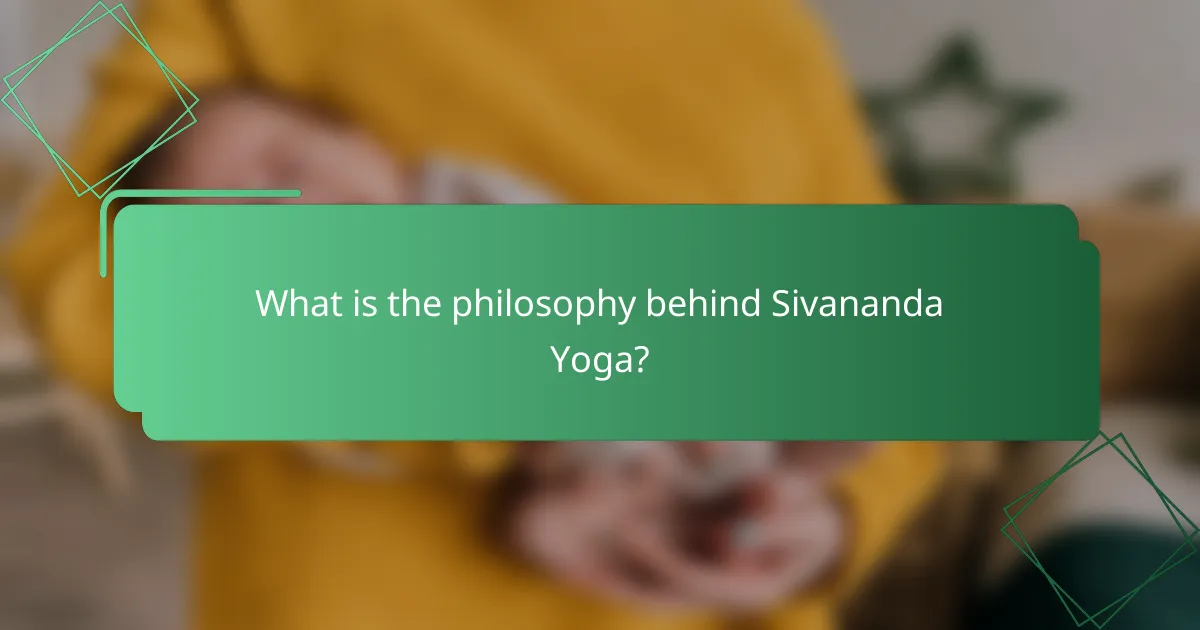
What is the philosophy behind Sivananda Yoga?
The philosophy of Sivananda Yoga is rooted in the teachings of Vedanta and emphasizes a holistic approach to well-being that integrates physical, mental, and spiritual practices. It promotes the idea that true health and happiness come from a balanced lifestyle that nurtures the body, mind, and spirit.
Vedanta teachings
Vedanta, a key component of Sivananda Yoga, focuses on the nature of reality and the self. It teaches that the ultimate goal of life is self-realization and understanding one’s unity with the universe. Practitioners are encouraged to explore these concepts through meditation, study, and self-inquiry.
Central to Vedanta is the idea that the individual self (Atman) is not separate from the universal consciousness (Brahman). This realization fosters a sense of connection and compassion towards all living beings, encouraging practitioners to live harmoniously with others and the environment.
Unity of consciousness
The unity of consciousness in Sivananda Yoga emphasizes the interconnectedness of all life. This principle suggests that by recognizing our shared existence, individuals can cultivate greater empathy and understanding. Practicing yoga and meditation helps deepen this awareness, allowing practitioners to experience a sense of oneness.
To embody this unity, Sivananda Yoga encourages regular practice of asanas, pranayama, and meditation, which help quiet the mind and enhance self-awareness. By doing so, individuals can transcend personal limitations and connect with a broader consciousness, leading to a more fulfilling and peaceful life.

How to choose a Sivananda Yoga center in the US?
Choosing a Sivananda Yoga center in the US involves considering factors like location, instructor qualifications, and class offerings. These elements will help ensure that you find a center that aligns with your personal goals and preferences.
Location and accessibility
When selecting a Sivananda Yoga center, consider its location and how easily you can access it. Look for centers that are conveniently situated near public transportation or have ample parking options. This will make it easier to attend classes regularly.
Additionally, think about the surrounding environment. A center in a peaceful area can enhance your yoga experience, allowing for better relaxation and focus during practice.
Instructor qualifications
Instructor qualifications are crucial when choosing a Sivananda Yoga center. Look for teachers who have completed a recognized Sivananda Yoga teacher training program, which typically lasts several weeks and covers both practical and theoretical aspects of yoga.
Experience is also important. Instructors with several years of teaching experience can provide valuable insights and guidance, helping you deepen your practice. Don’t hesitate to ask about their backgrounds and teaching styles before committing to a center.
Class offerings
Evaluate the class offerings at each Sivananda Yoga center to ensure they meet your needs. Look for a variety of classes, including beginner, intermediate, and advanced levels, as well as specialized sessions like meditation or pranayama.
Some centers may offer workshops or retreats that can enhance your practice. Check the schedule to see if they align with your interests and availability, and consider attending a trial class to get a feel for the teaching style and community atmosphere.

What are the common misconceptions about Sivananda Yoga?
Common misconceptions about Sivananda Yoga often stem from a limited understanding of its holistic nature. Many people mistakenly view it as solely a physical practice, neglecting its deeper philosophical and spiritual components.
Yoga as purely physical
A prevalent misconception is that yoga, including Sivananda Yoga, is only about physical postures (asanas). While asanas are an essential part of the practice, Sivananda Yoga emphasizes the integration of body, mind, and spirit, promoting overall well-being.
This holistic approach includes breathing exercises (pranayama), meditation, and ethical principles (yamas and niyamas) that guide practitioners in their daily lives. Ignoring these aspects can lead to an incomplete understanding of yoga’s benefits.
Misunderstanding of meditation
Another common misunderstanding is that meditation is merely a technique for relaxation. In Sivananda Yoga, meditation is a profound practice aimed at achieving self-realization and inner peace, going beyond just calming the mind.
Practitioners are encouraged to engage in meditation regularly, which can involve various techniques such as mantra repetition or mindfulness. This practice fosters a deeper connection to oneself and can significantly enhance the overall yoga experience.
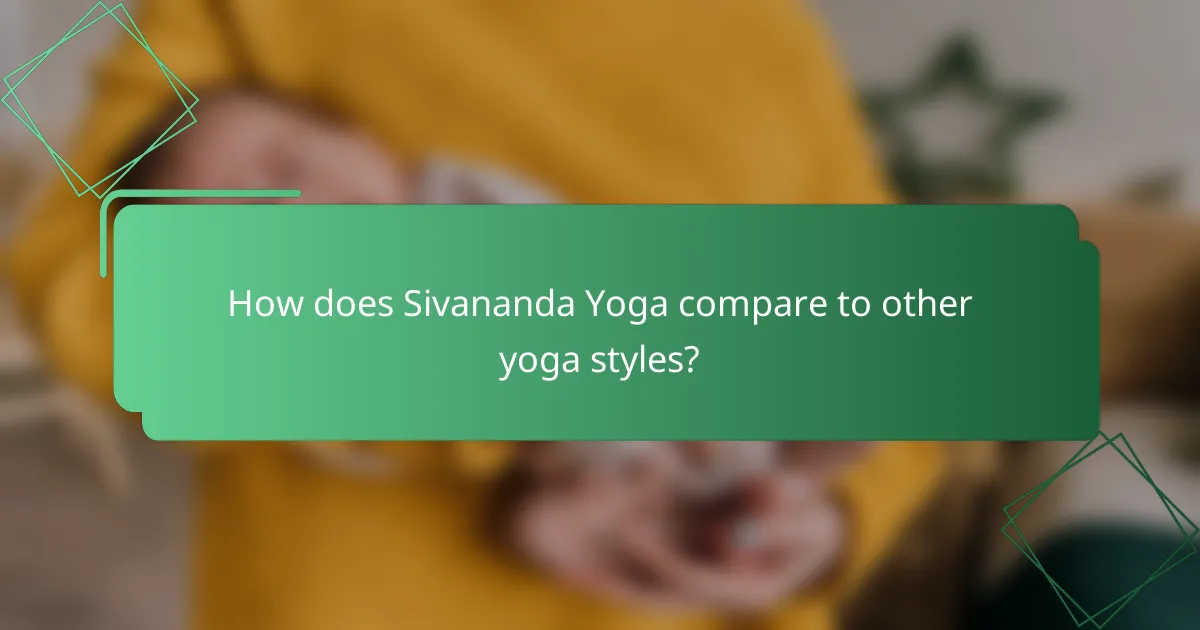
How does Sivananda Yoga compare to other yoga styles?
Sivananda Yoga emphasizes a holistic approach that integrates physical postures, breathing techniques, and meditation, distinguishing it from many other yoga styles. While it shares some similarities with Hatha and Ashtanga Yoga, its focus on relaxation and philosophical teachings sets it apart.
Differences from Hatha Yoga
Sivananda Yoga and Hatha Yoga both incorporate physical postures, but Sivananda places a greater emphasis on the spiritual and philosophical aspects of practice. Hatha Yoga often focuses on alignment and physical strength, while Sivananda includes a structured sequence of asanas designed to promote relaxation and inner peace.
Additionally, Sivananda Yoga typically includes a more extensive meditation component and encourages practitioners to adopt a lifestyle aligned with yogic principles, such as vegetarianism and ethical living. This holistic approach aims to cultivate not just physical health but also mental and spiritual well-being.
Comparison with Ashtanga Yoga
Ashtanga Yoga is characterized by its vigorous, fast-paced sequences and a strong focus on physical fitness, making it quite different from Sivananda Yoga. While Ashtanga follows a set series of postures performed in a specific order, Sivananda allows for more flexibility in practice, focusing on relaxation and breathing throughout the session.
Moreover, Sivananda Yoga encourages practitioners to engage in a slower, more meditative practice, which can be beneficial for stress relief. In contrast, Ashtanga’s intensity may appeal to those seeking a more physically demanding workout. Both styles can be rewarding, but the choice depends on individual goals and preferences in yoga practice.

